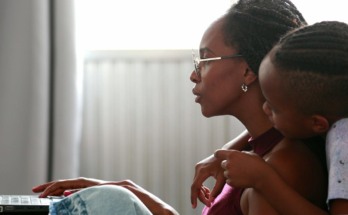
If you’ve found it hard to keep track of whose turn it is to get the COVID vaccine, there’s good news and bad news. The White House is recommending that everyone over 65 and adults with high-risk conditions be able to get the vaccine starting two weeks from now, which means a lot of people will be eligible sooner than they thought. The bad news? The process of actually getting the vaccine is still confusing and differs from state to state. Also, we don’t have enough doses for everyone in the new eligibility groups.
The original plan, from a CDC advisory panel called ACIP, was to have overlapping priority groups called phases 1a, 1b, and 1c. Healthcare workers are in group 1a, and if you have friends who work in healthcare, you’ve probably seen countless vaccine selfies in your social media feeds. (If you don’t, take a look at the History of Vaccines Instagram account, which is documenting this history in the making.)
But even this phase has been tricky to implement, as nearly 30 million doses have been shipped out so far, the CDC reports, but only 10 million people have been vaccinated. Some of the difference may be a reporting lag, but it also seem like vaccines just aren’t getting to everyone who wants them.
Why is this so complicated?
Each state operates its own vaccine distribution program. States don’t have to follow the priority guidelines, so many have been making their own tweaks—for example, allowing older people to be vaccinated already. Whether you’re eligible or not depends on who you are and what state you happen to live in. That will most likely still be the case with the new rule.
G/O Media may get a commission
States also weren’t given enough funding to support the massive project they were being asked to do, as giving shots to every adult in the country is a huge undertaking. STAT reports that state and local public health officials asked for $8.4 billion dollars in October to do the job properly; that money wasn’t authorized until the coronavirus stimulus bill passed in December, after vaccinations had already begun.
Honestly, I’m surprised no one in the government managed to even throw up a hotline or a website at, say, vaccine.gov, where you could look up whether you’re eligible and where to find your nearest vaccination site. Instead, you need to check with your state or local health department, and follow whatever instructions they give you. In many areas, older folks who don’t own a smartphone have had trouble booking vaccine appointments, since many systems require you to sign up on a website and be able to receive texts.
There are practical aspects, too. The vaccines have a limited amount of time they can be stored at each temperature (freezer, refrigerator, etc.) and hospitals have sometimes had to throw away doses that can’t be used at the end of the day. In some places, at the end of the day, vaccines can be offered to anyone regardless of priority group to make sure doses are not wasted; in others, like New York, there are penalties for vaccinating people who don’t fall in the current priority groups. (That rule was intended to stop people from skipping the line and getting shots just because they’re famous or friends with whoever is scheduling vaccines.)
What happens next?
Well, it’s hard to say. The recent plan, announced yesterday by Health and Human Services Secretary Alex Azar, involves changing the rules for how vaccines are divided among the states, and it recommends that states consider people over 65 and those with high-risk medical conditions immediately eligible.
But the changes don’t take effect for two weeks, which puts the date after the inauguration. Joe Biden will be president then, and his administration could change the plan. (Operation Warp Speed says they didn’t coordinate with Biden’s people on this.)
If the change holds, it may mean that more people are competing for the same small number of vaccination appointments, but it may also mean that fewer doses will be wasted. Either way, keep an eye on your local or state health department’s website (in some states, you can sign up to be notified) to find out when it’s your turn.



